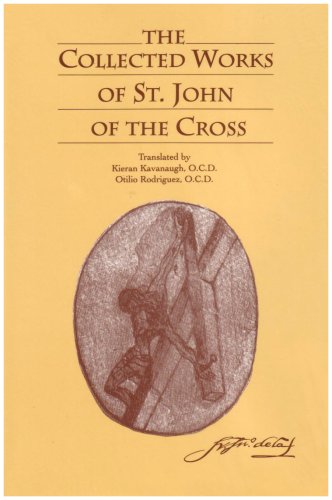Saint John of the Cross (born Juan de Yerpes) was a mystic from the Catholic Carmelite order in 16th Century Spain. He was a contemporary of Saint Teresa of Avila, and the two are probably the most well known mystics from Catholicism in the Middle Ages.
Saint John produced several works, the most substantial of which were The Ascent of Mount Carmel and The Dark Night. In this series, I will take a look at both of these major works.
Although he attempts to outline his own work several times, St. John is not necessarily a systematic writer. He does eventually touch on all the themes he promises to, but perhaps not in as sequential a way as we would like. This is not uncommon among the Catholic mystics as their theological reflections sometimes take their writings on paths they didn't originally intend.
St. John opens The Ascent with a poem which underlies his writing. He introduces the stanzas and then records the poem as follows:
"This treatise explains how to reach divine union quickly. It presents instruction and doctrine valuable for beginners and proficients alike that they may learn to unburden themselves of all earthly things, avoid spiritual obstacles, and live in that complete nakedness and freedom of spirit necessary for divine union. It was composed by Padre Fray John of the Cross, Discalced Carmelite.
The following stanzas include all the doctrine I intend to discuss in this book, The Ascent of Mount Carmel. They describe the way that leads to the summit of the mount – that high state of perfection we here call union of a soul with God. Since these stanzas will serve as a basis for all I shall say, I want to cite them here in full that the reader may see in them a summary of the doctrine to be expounded. Yet I will quote each stanza again before its explanation and give the verses separately if the subject so requires.
A song of the soul's happiness in having passed through the dark night of faith, in nakedness and purgation, to union with its Beloved.
1. One dark night,
fired with love's urgent longings
– ah the sheer grace! –
I went out unseen,
my house being now all stilled.
2. In darkness and secure,
by the secret ladder, disguised,
– ah the sheer grace! –
in darkness and concealment,
my house being now all stilled.
3. On that glad night,
in secret, for no one saw me,
nor did I look at anything,
with no other light or guide
than the one that burned in my heart.
4. This guided me
more surely than the light of noon
to where he was awaiting me
– him I knew so well –
there in a place where no one appeared.
5. Oh guiding night!
O night more lovely than the dawn!
O night that has united
the Lover with his beloved,
transforming the beloved in her Lover.
6. Upon my flowering breast
which I kept wholly for him alone,
there he lay sleeping,
and I caressing him
there in a breeze from the fanning cedars.
7. When the breeze blew from the turret,
as I parted his hair,
it wounded my neck
with its gentle hand,
suspending all my senses.
8. I abandoned and forgot myself,
laying my face on my Beloved;
all things ceased; I went out from myself,
leaving my cares
forgotten among the lilies."
– St. John of the Cross, Ascent of Mount Carmel
Although St. John will deviate from his original structural plan of citing each verse and commenting on it, this poem provides the backdrop for both The Ascent of Mount Carmel and, later, The Dark Night.
